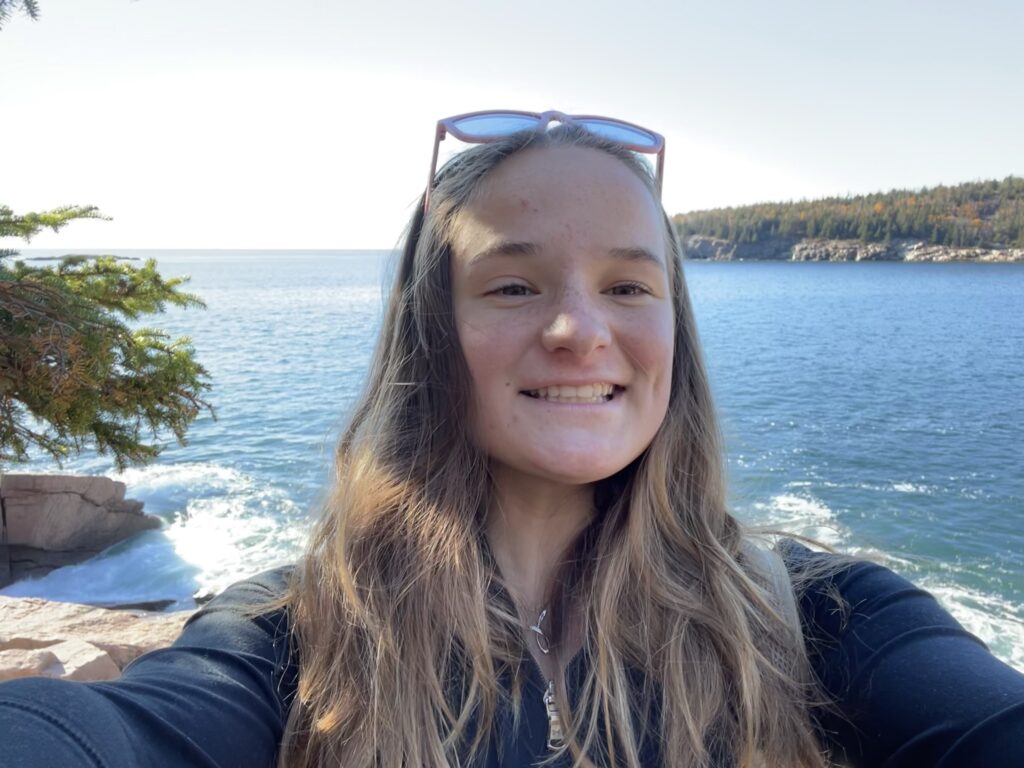Do you love nature? Are plants and animals up your alley? Well, you’re in the right place. This blog is a documentation of my notes, observations, and thoughts on UVM’s Centennial Woods in Burlington, VT. Phenology, commonly referred to as ‘Nature’s Calendar,’ is a tried and true method for measuring the progression of seasons through observing changes in nature’s patterns.
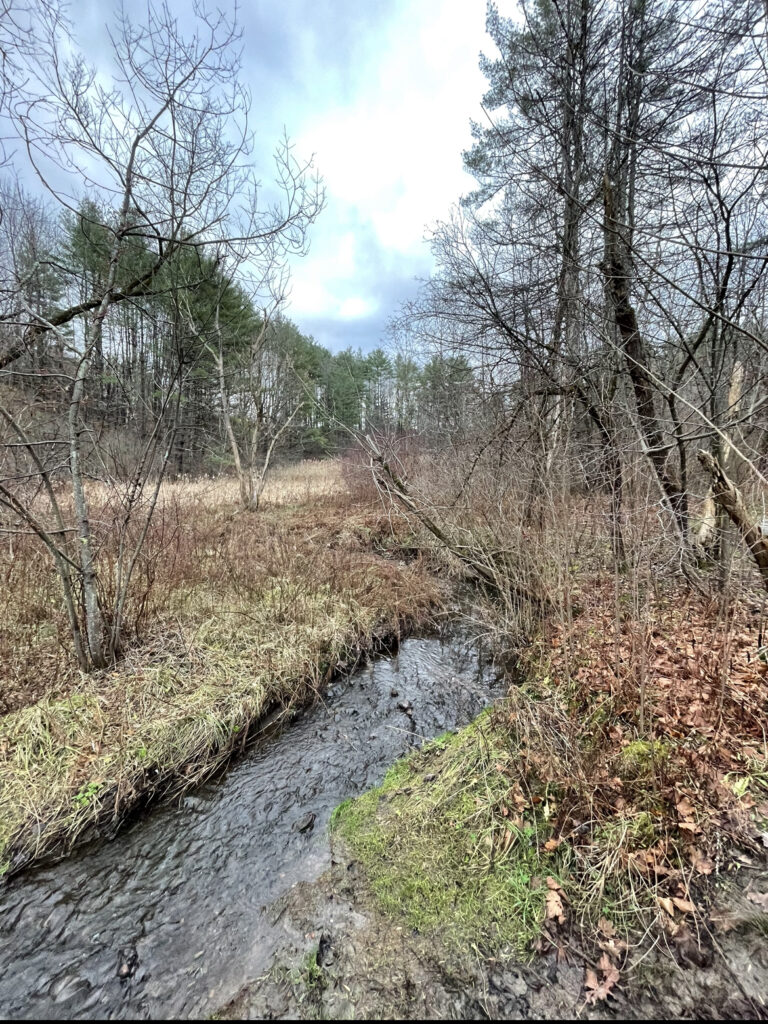
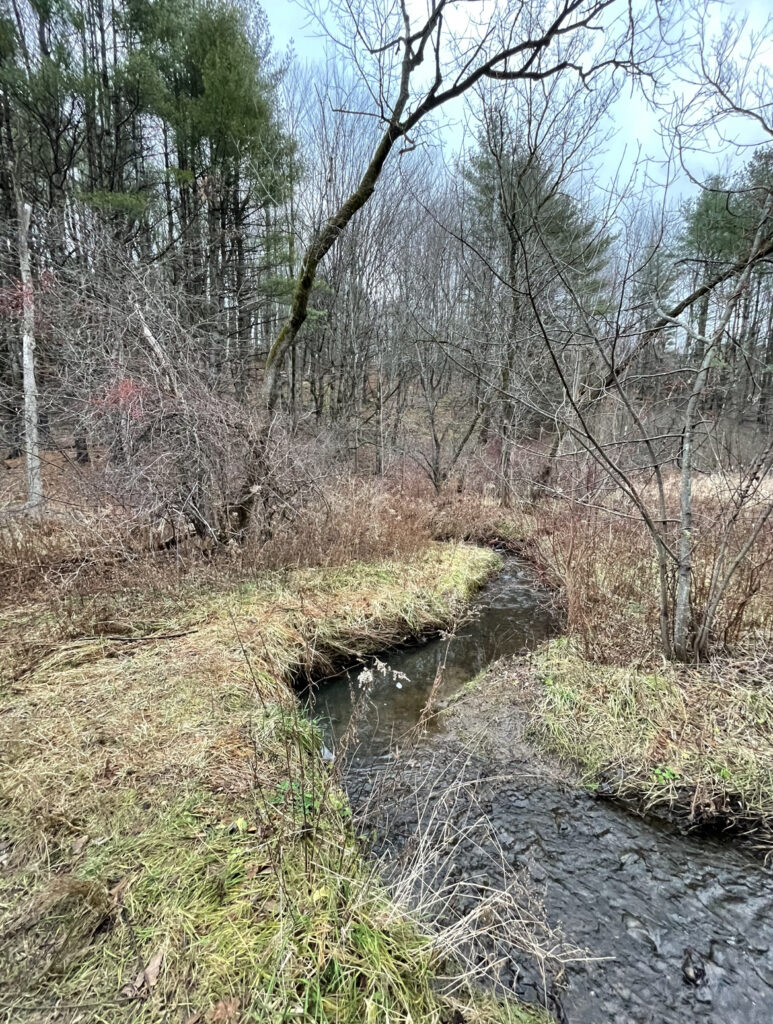
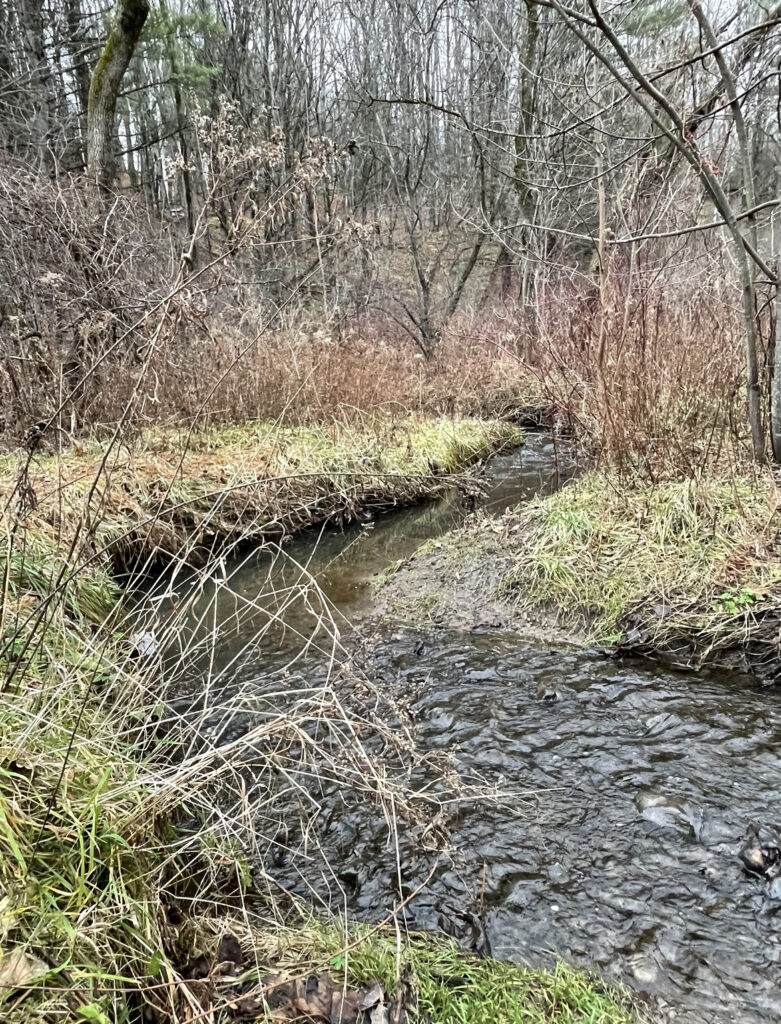
December 8th, 2022 at 3 o’clock PM. Today’s weather was cloudy and cold, with a temperature around 38°F, but felt like 31°. The foliage of my site has dramatically changed since my initial visit to this location. All of the nearby trees are deciduous and have lost all of their leaves. (The fallen leaves in shades of red and brown are decomposing on the ground or caught in the branches of bushes). However, the coniferous trees in the distance have retained their needles. There are no persistent fruits anywhere and the grass remains on lone green vegetation on this site. While there is little evidence of wild animals in this area, there are dog tracks left in the mud alongside the brook. Speaking of, the brook’s flow has grow steadily stronger since my last visit, possibly due to the recent rain the past two days. This has allowed the bank to become muddy and the impression of the prints to hold. As this is my final phenology post of the semester and the year 2022, my favorite aspects of my phenology site have been the brook and the proximity to my friend’s site. The brook has been so cool to document throughout the seasons as it changed in speed and size, and brought many visitors to my site (human and animal included). It added an element of beauty to my site as well although the pictures don’t always do it justice. My friend’s site is down stream around a corner just out of sight, which I have also enjoyed because we have the ability to work separately on visits we schedule together. My least favorite thing about this assignment would be dealing with the weather, as I feel everything I have a plan to go a certain day to do my observations and take notes, that day ends up being uncharacteristically cold or rainy.
I noticed some oil possibly? gathering in indentations in the mud. This evidence of human activity and pollution was disheartening and made me wonder what could have caused it to be so deep into the woods.
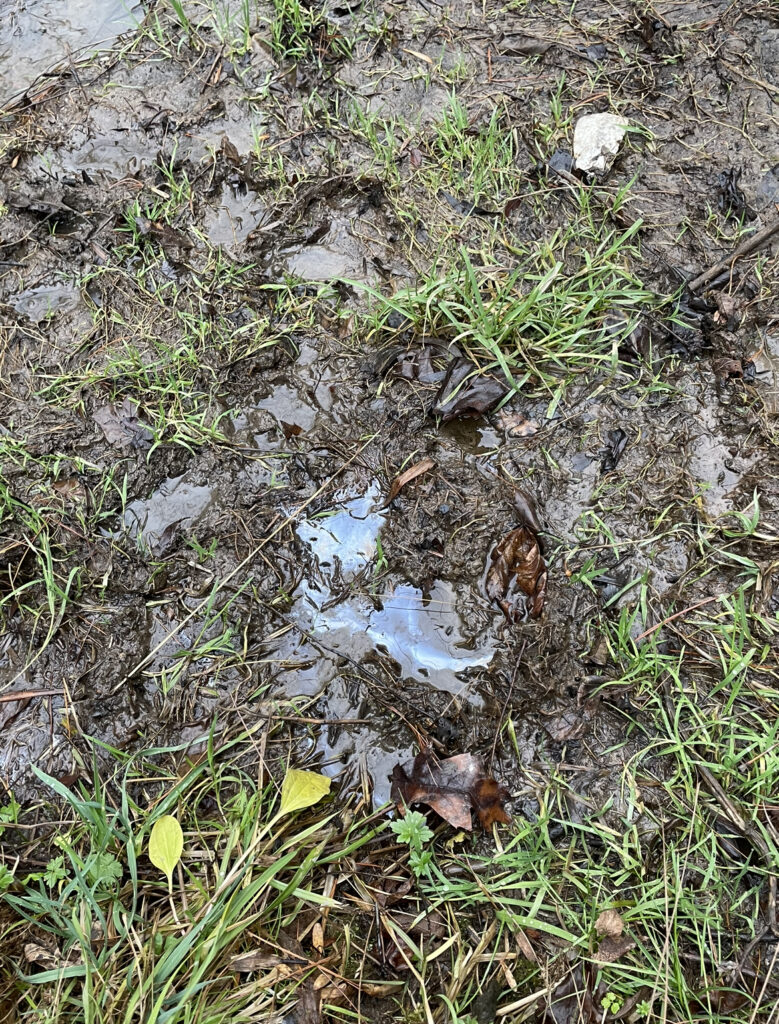
Posted in Uncategorized | Leave a Comment »
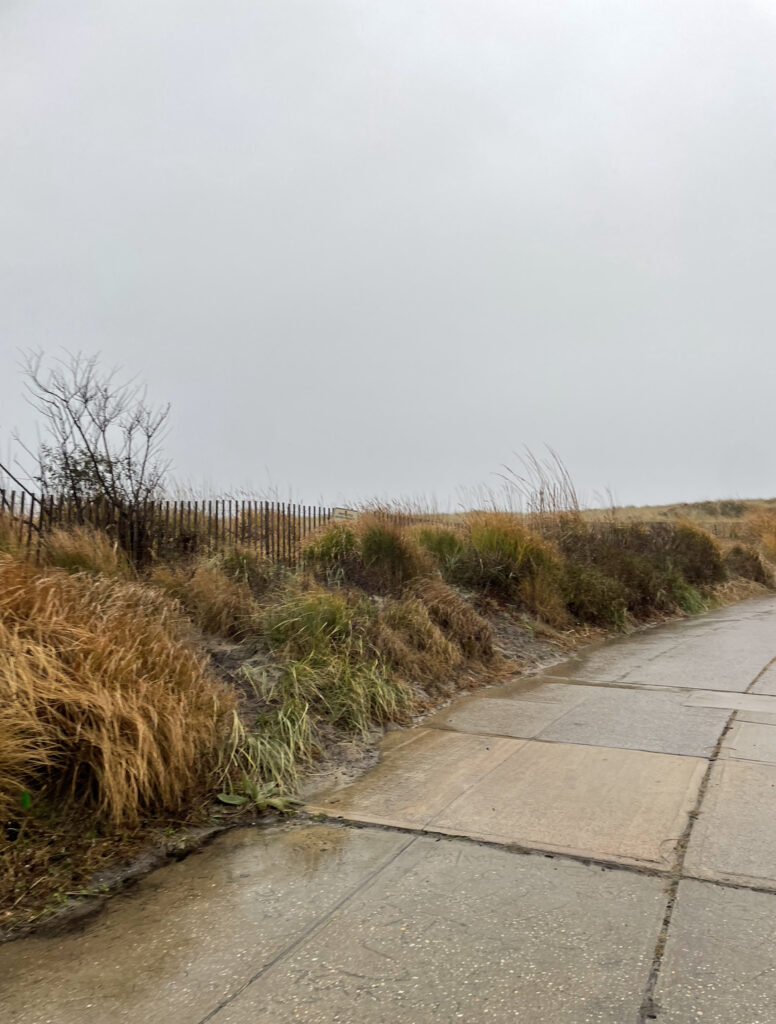
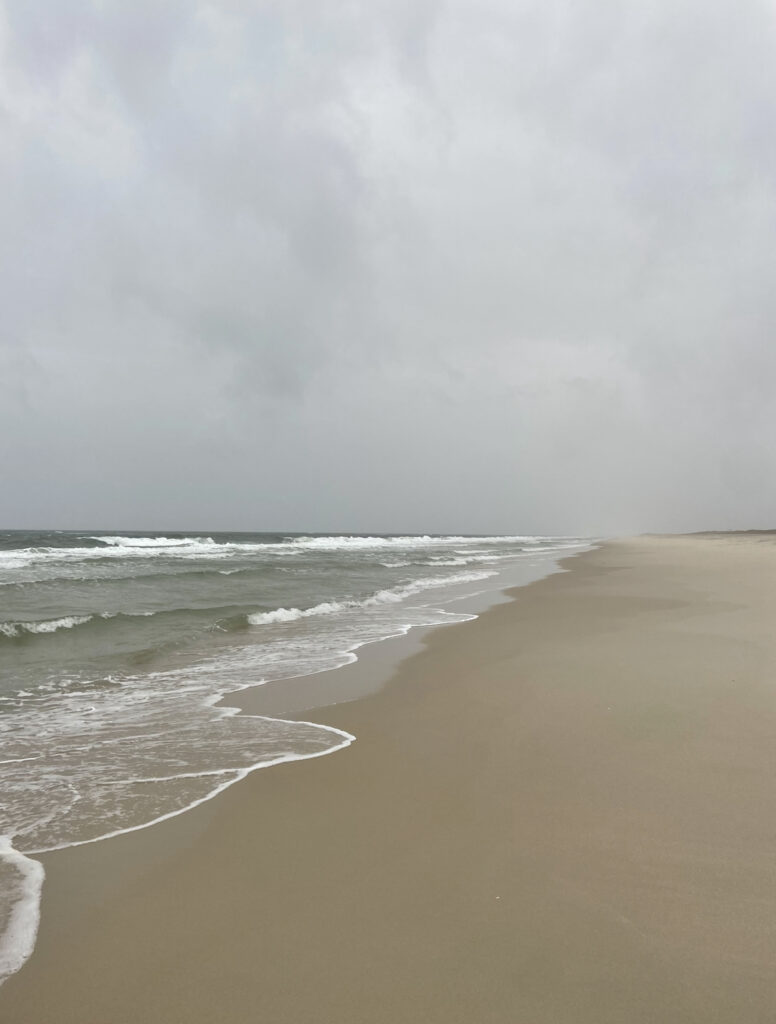
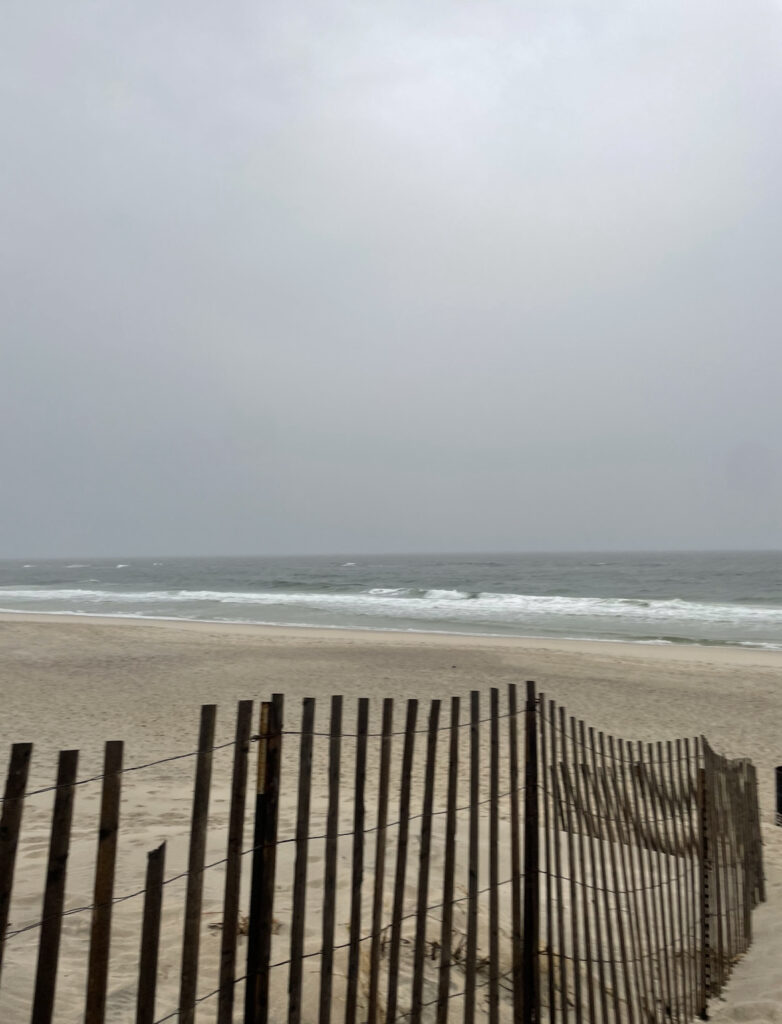
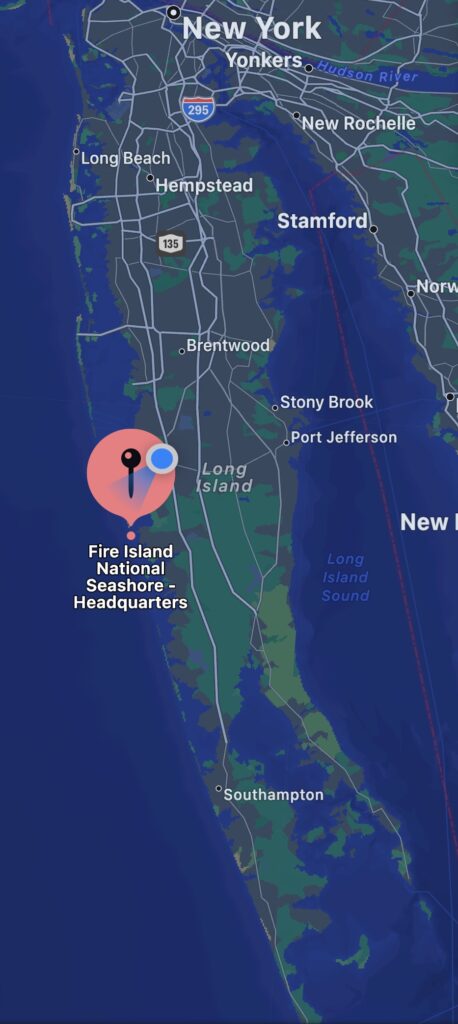
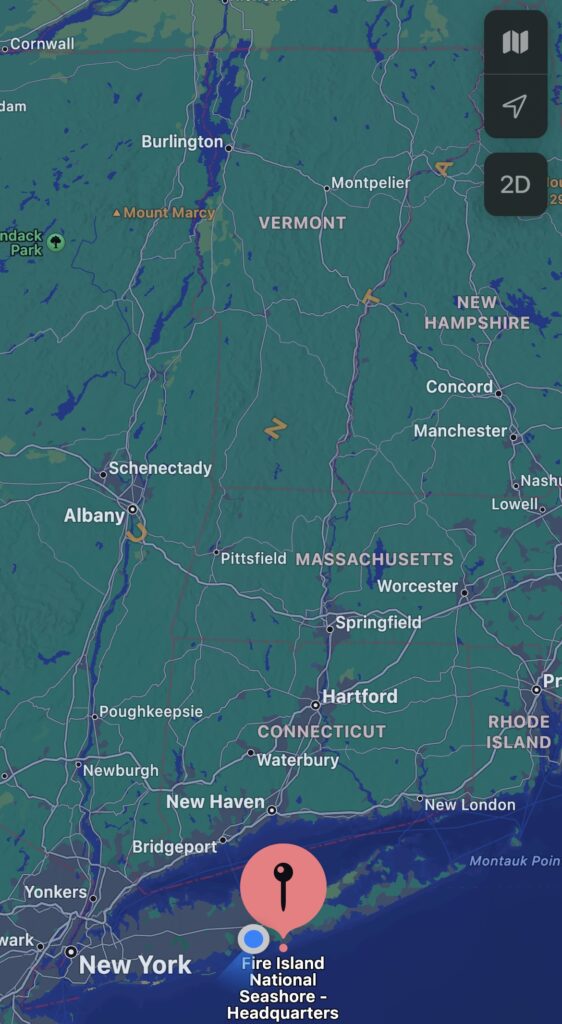
11/27/22 I am spending break on Long Island, and for my phenology project here I choose Smith Point Beach, Fire Island. The phenology of this place is significantly different from my spot in Centennial Woods. Where Centennial has bare trees, fallen leaves, and snow as signs of the changing seasons, the natural areas of Fire Island have dying bushes, dropping ocean temperatures, and less marine wild life activities. The human impact on both phenology places is also something I wanted to talk about. In Centennial Woods, the area is impacted by the level of nearby impervious surfaces, the recreational use of the forest trails, and the noise pollution from the roads. Smith Point is impacted by recreational use of the beach and the presence of people has clearly had an impact of the wildlife. For one, the deer population is completely desensitized to people because the have come to associate humans with food. Secondly, the piping plover population is protected by the rules on the beach prohibiting access to the outer beach, which is a nesting ground for the birds in the late spring/summer.
Posted in Uncategorized | Leave a Comment »

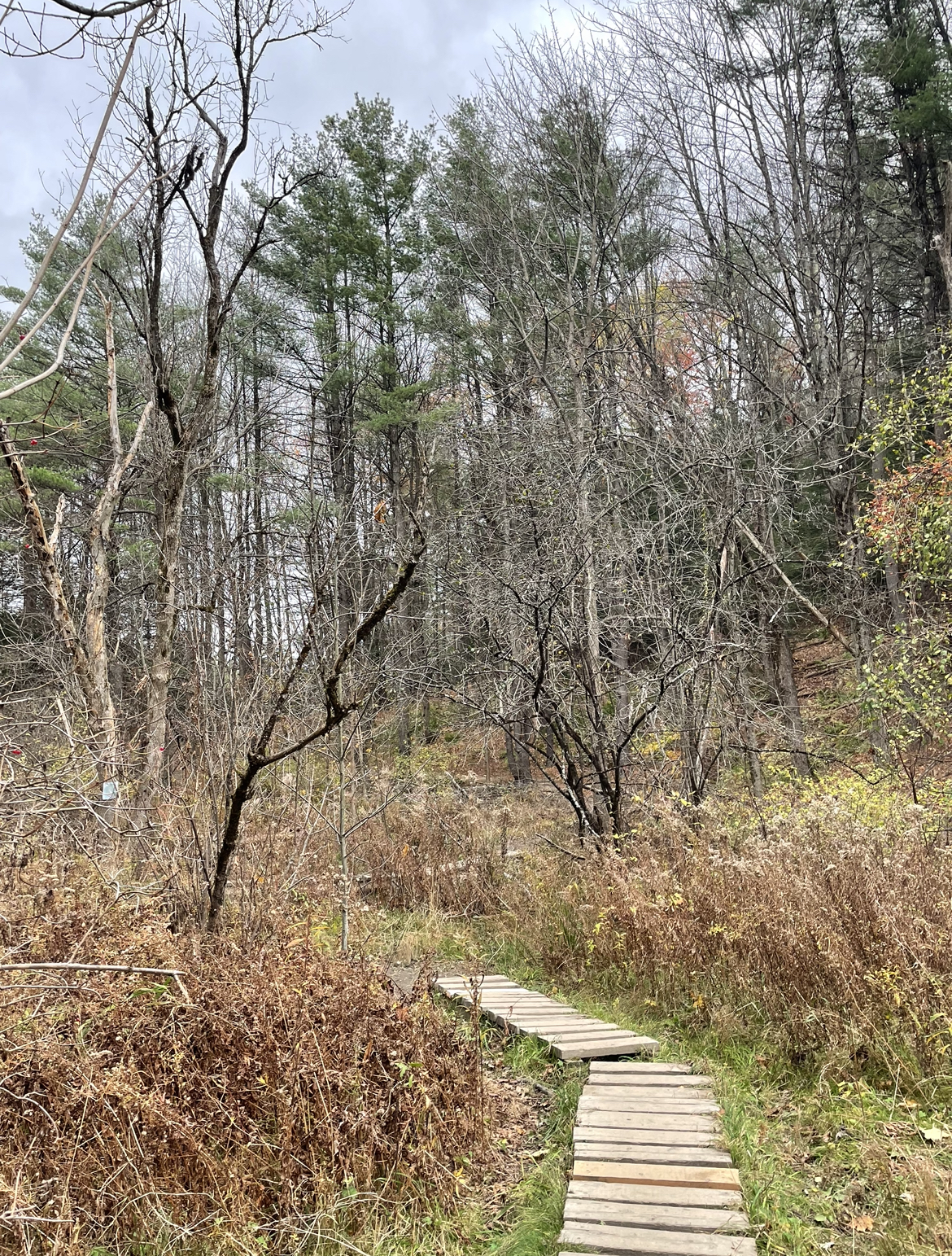

Today was cloudy, 72°, and rainy towards the end of my visit. During the 15 minutes assigned to sit and observe at our locations, I noticed lots of birds singing and some of the taller trees creaking in the wind. Most of the leaves have fallen off the trees at this point, and are laying in dry piles along the pathway. As a result, the canopy is significantly thinner and even though today wasn’t sunny, the area was brighter than normal. The brook is a lot quieter and gentler than last visit, with a slower flow, and it’s carrying some leaves downstream. A change in vegetation in addition to the trees loosing their leaves would be the dried/dead bushes and Queen Anne’s lace along the boardwalk. Some of the features of the map below include the wooden boardwalk, the brook, and the surrounding vegetation.
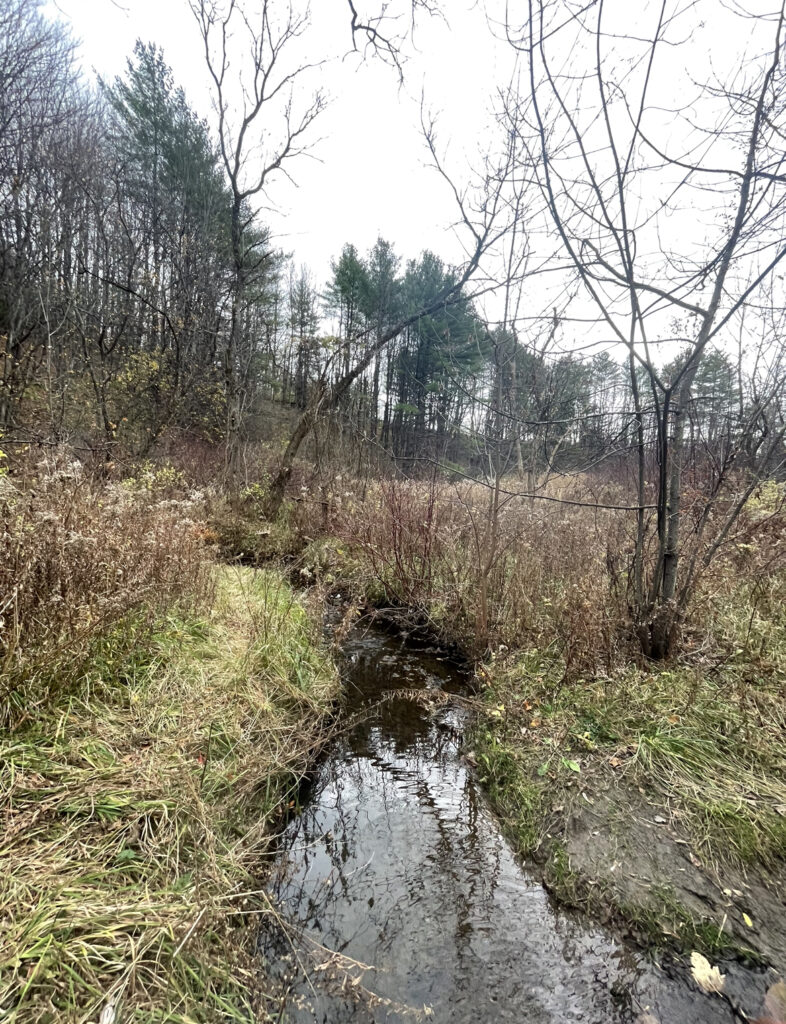
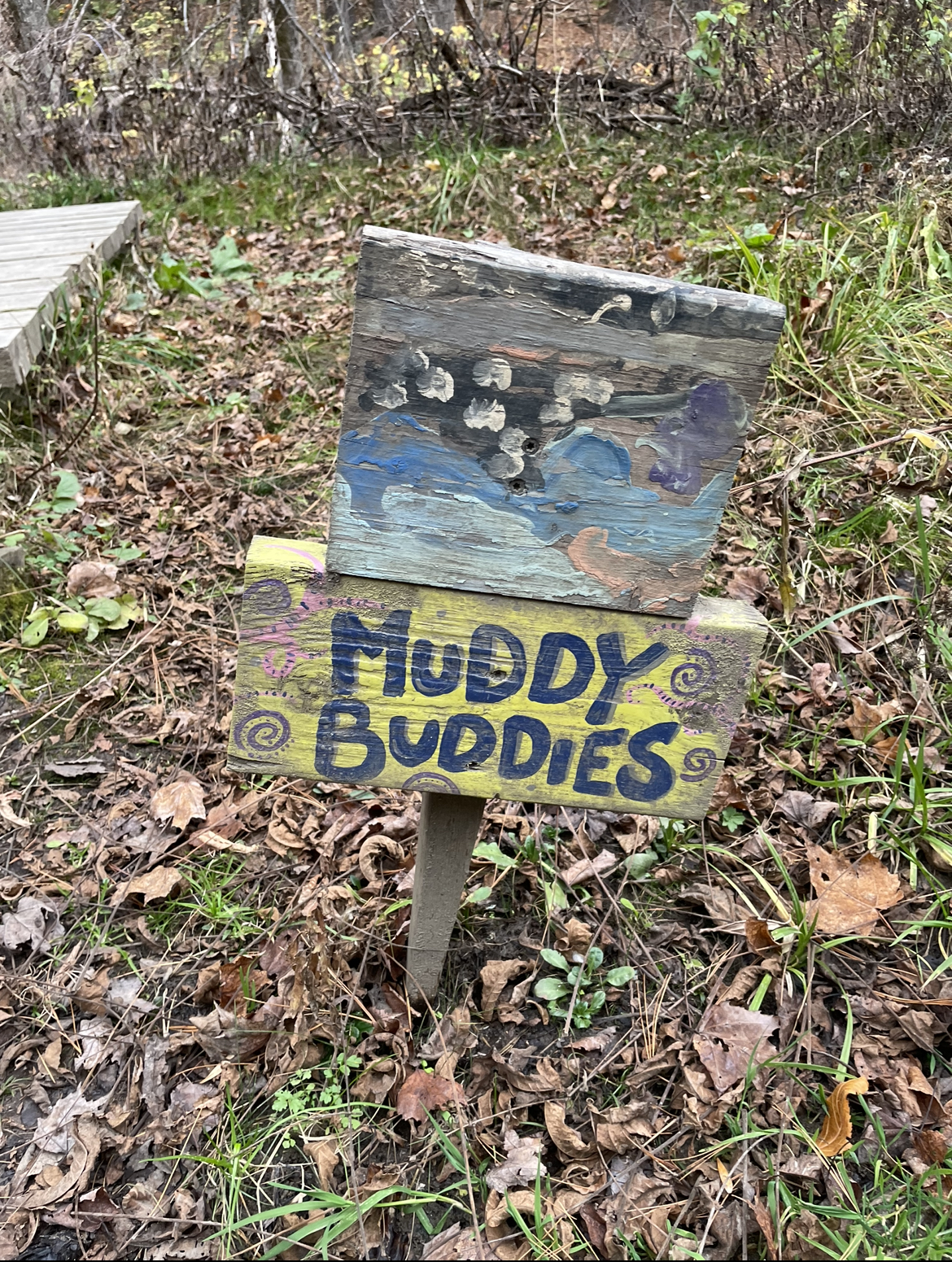
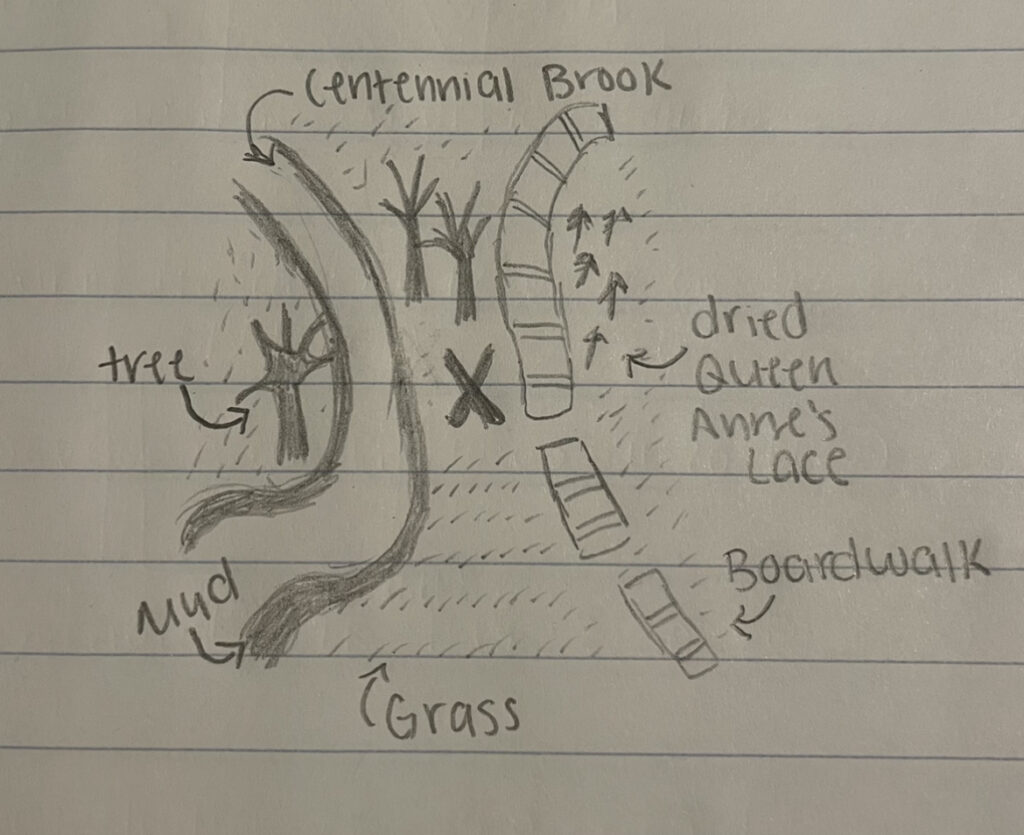
Posted in Uncategorized | Leave a Comment »
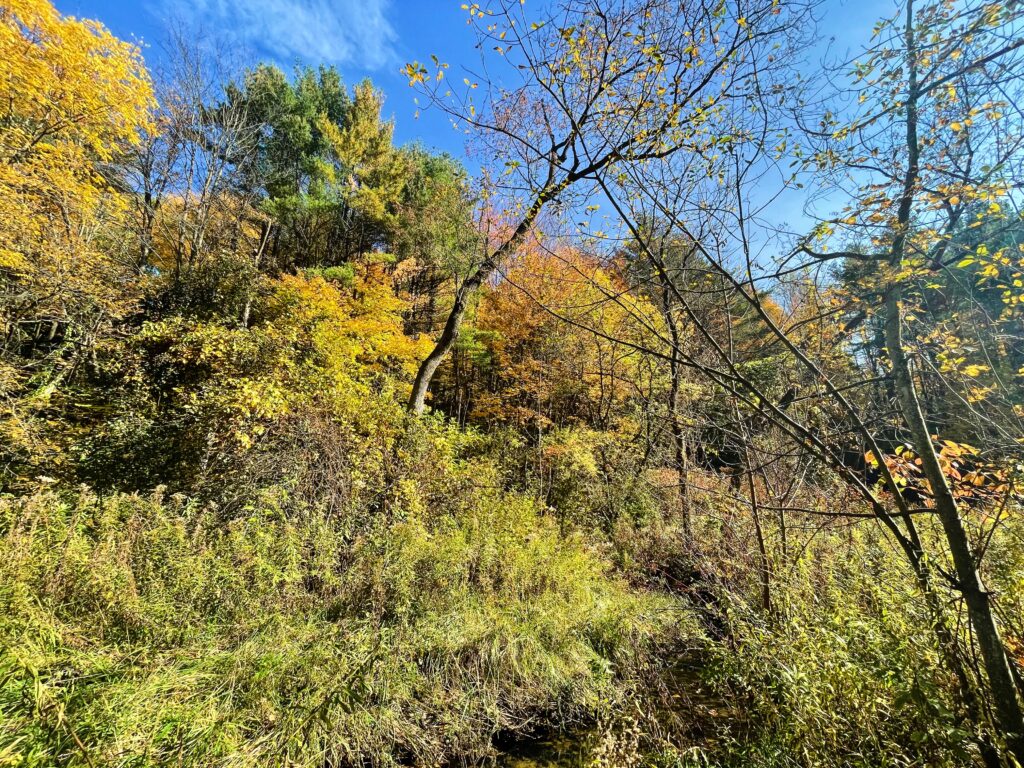
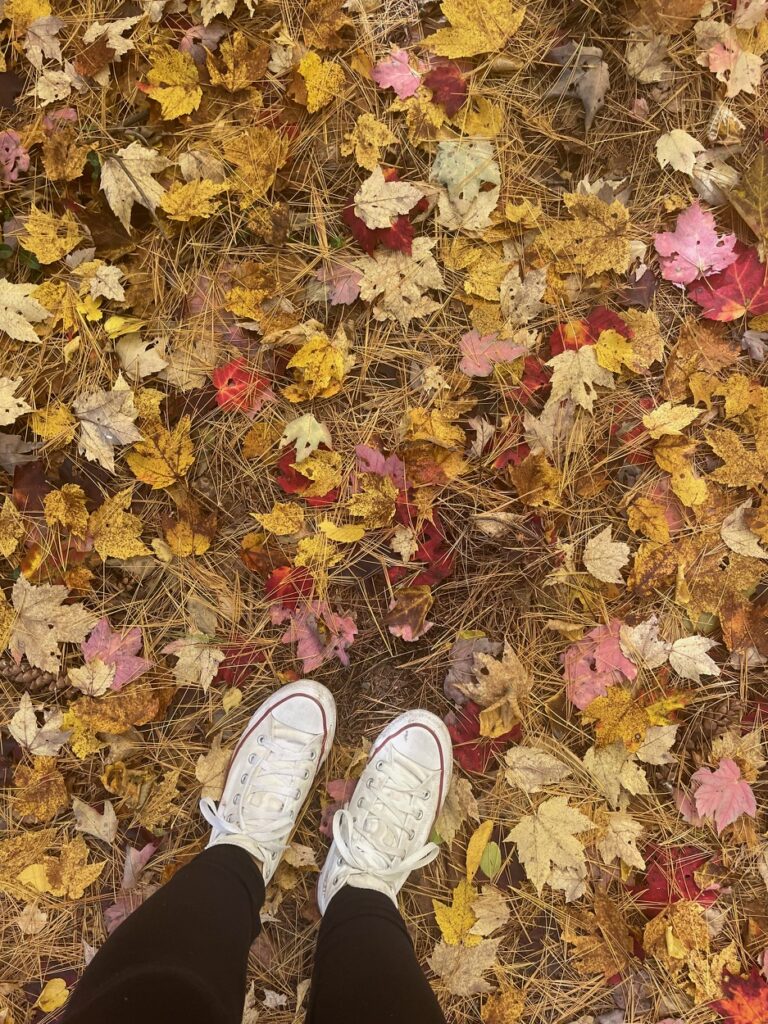
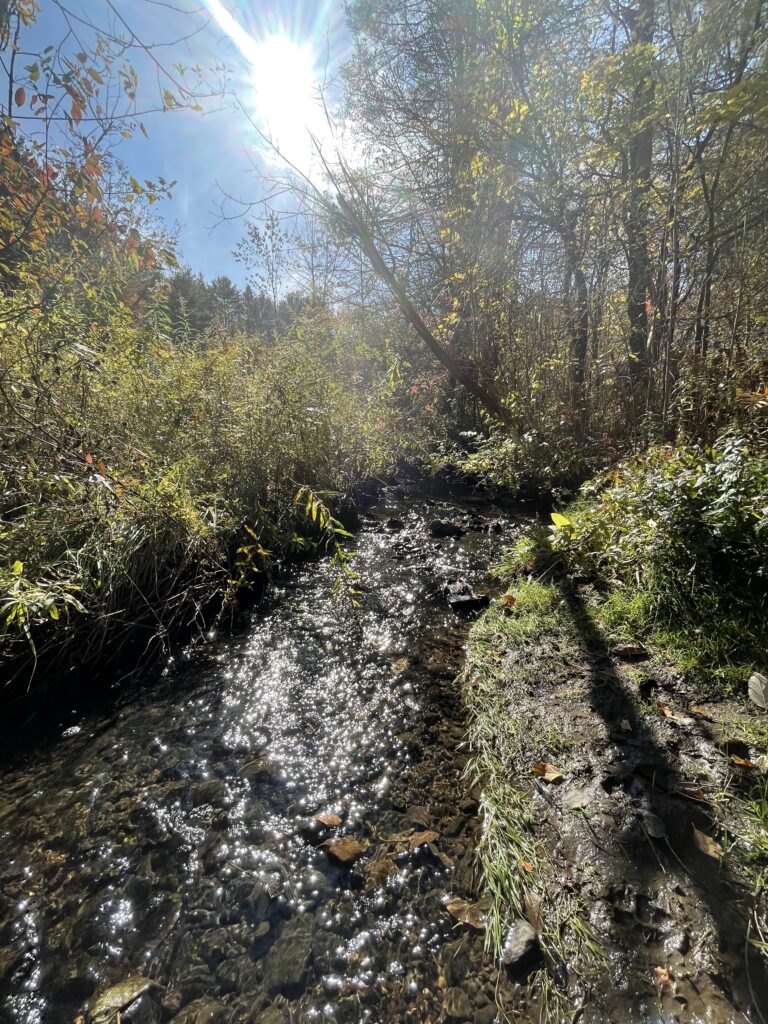
First visit! Stopped by today for some pics and introductory notes about the spot. Beautiful day, sunny and 59° F at 12 pm. The bank of the brook was very muddy from rain a few days ago. Saw lots of dogs.
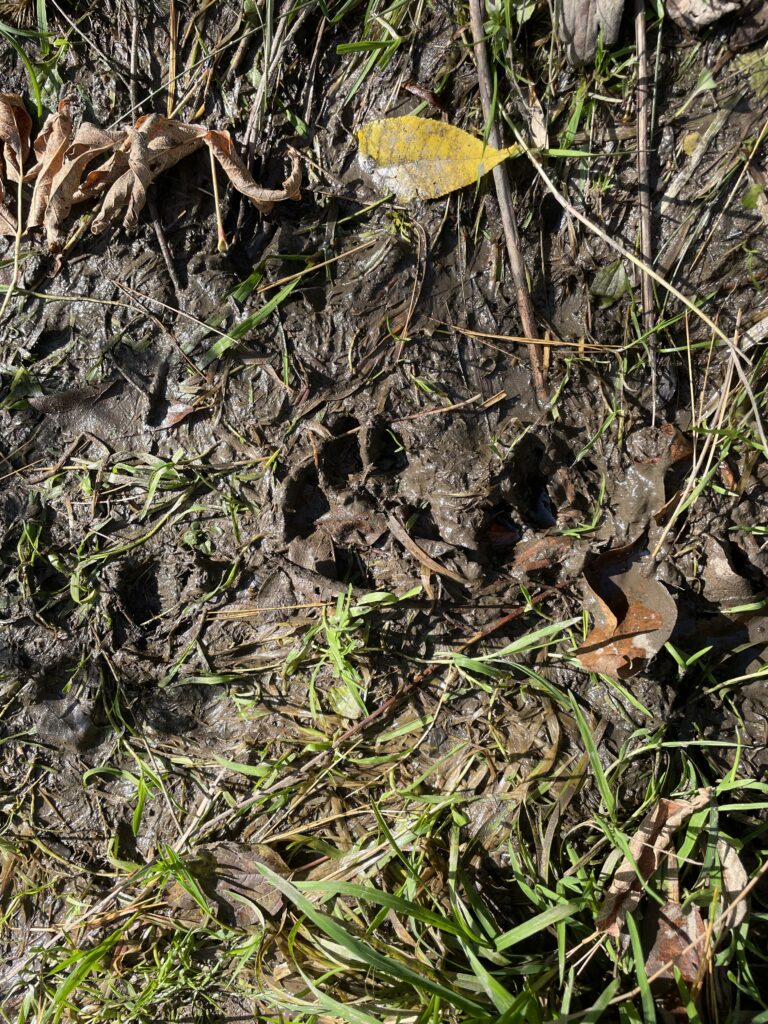
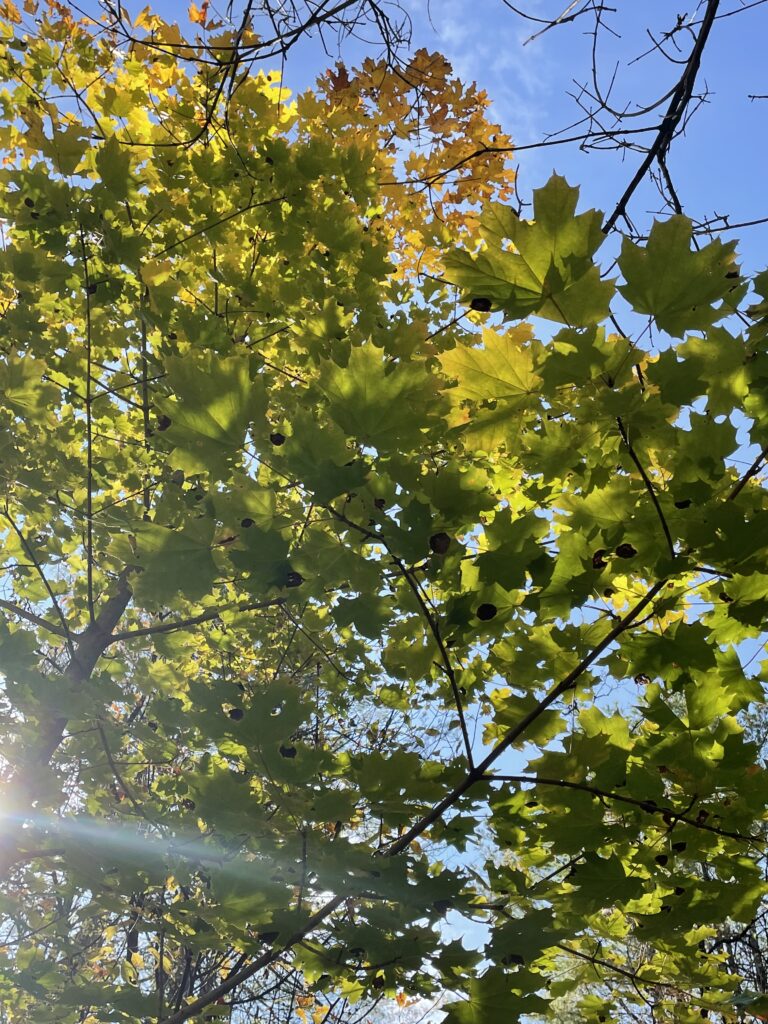
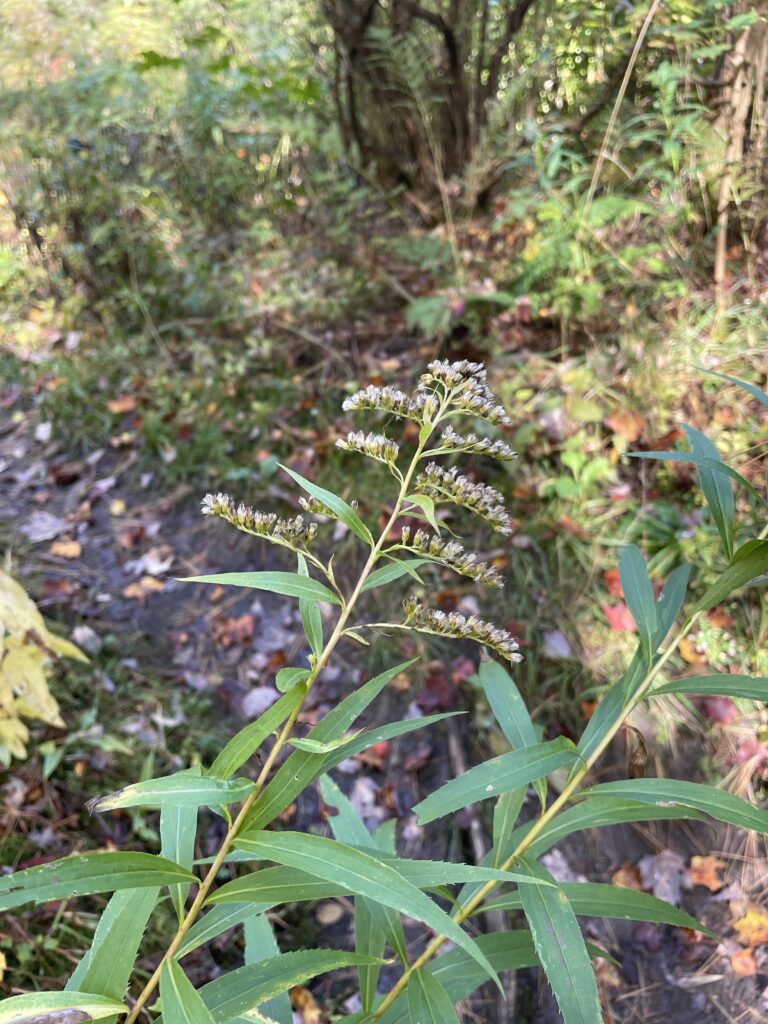
Posted in October '22, Uncategorized | Leave a Comment »
Where: Centennial Woods, a short 15 minute walk from my dorm (that I have a feeling will feel less and less short as the snow accumulates) is the lovely location I selected to study for this assignment. Nestled between the Winooski River and the I-89 highway, Centennial is a surprisingly peaceful nature preserve that fosters a diverse and thriving ecosystem. 70 acres of woods, with the meandering “Centennial Brook,” and numerous trails snaking through the property, this forest is popular location for both UVM students and the public. For our purposes, this blog will focus on the specific changes of one plot along the brook. To find your way to this very special plot, you need only enter the woods from Catamount Drive and follow the main trail for about five minutes until you come to the first spot the brook and the trail (man-made wooden boardwalk at this point) run parallel with each other only 2 feet apart.
Why: With so many interesting and beautiful locations calling the Burlington area home, you may ask yourselves, “Why this one?” Well, the answer is that due to lack of transportation resources as a broke college freshman, Centennial Woods is a convenient walk from campus and one that is popular for other students phenology blogs. Seeing as I was already familiar with the area from NR1’s first lab this semester (and my friend was doing hers in Centennial too), I decided to take advantage of this and call the woods home for this phenology blog. As to why I chose this spot, all I can say is that I knew I wanted to study somewhere near the brook, because watching the waters freeze and then thaw again was something I wanted to document. This spot isn’t too deep in the woods so that it doesn’t involve excessive hiking through mountains of snow in the winter, and isn’t too close to the forest’s edge so that there is minimal noise pollution or evidence of anthropological activity.
What: As detailed above, this area’s center piece is Centennial Brook. The trail in this stretch consists of man made boardwalks to pass through the area avoiding trekking through the mud created by the brook. Headed deeper into the woods, the brook (shallow and rocky) is on your right and on the left is dense plant life. Similarly, the other side of the brook mirrors this plant life. Although the vegetation here is plentiful, it is showing signs of the coming winter such as withering. The most prominent species to be noted here are as follows; Goldenrod, Queen Anne’s Lace, Poison Ivy, Creeping Buttercup, and Glossy Buckthorn. Also, if you’re into trees, here you’ll find a Norway Maple, Green Ash, Northern Red Oak, and Eastern White Pine (if you squint high in the over story across the brook.) The above were identified with my clearly extensive knowledge of plants, and the help of friends and the NatureID app.
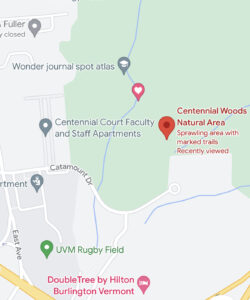
Posted in Introduction | Leave a Comment »
